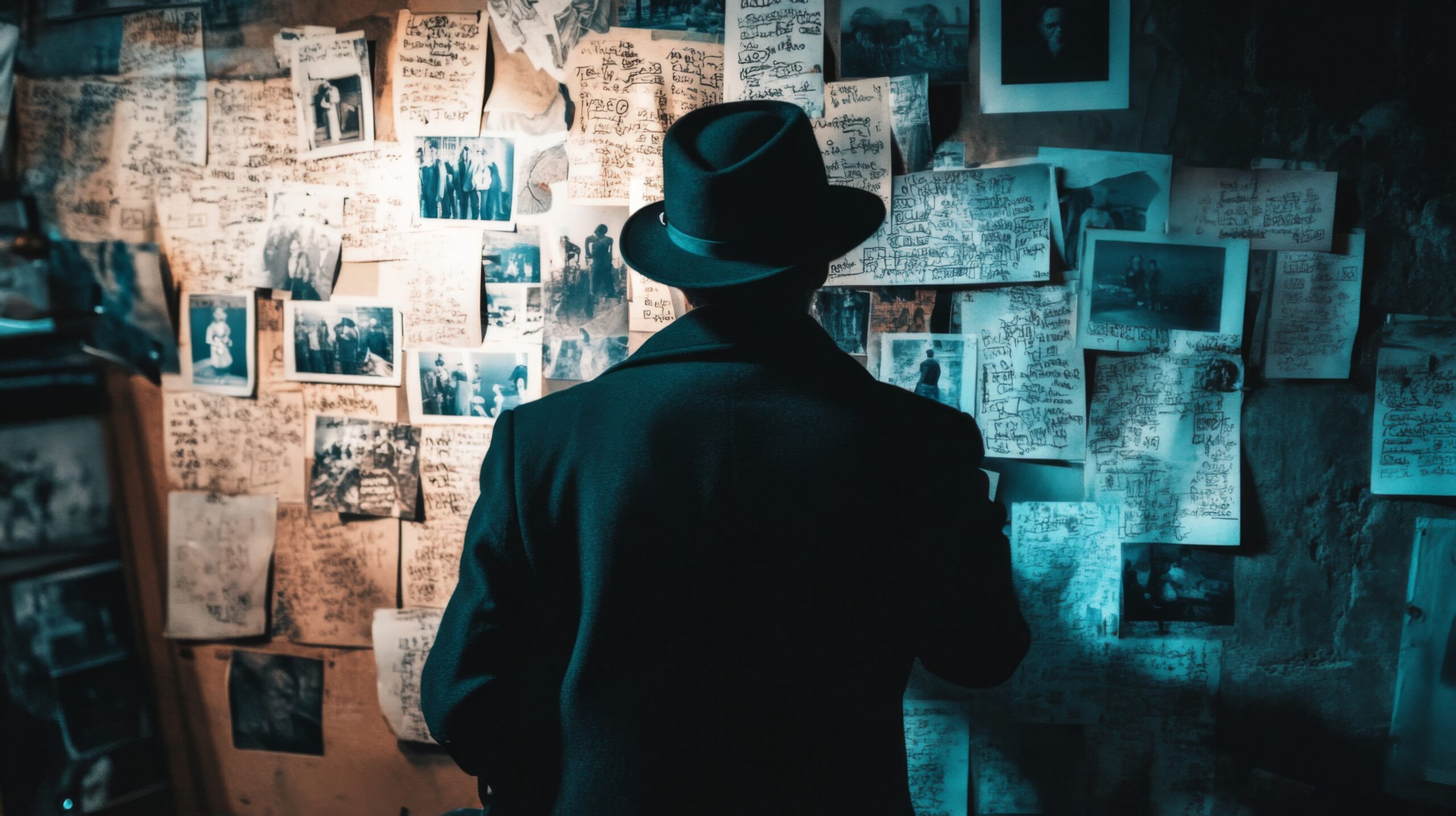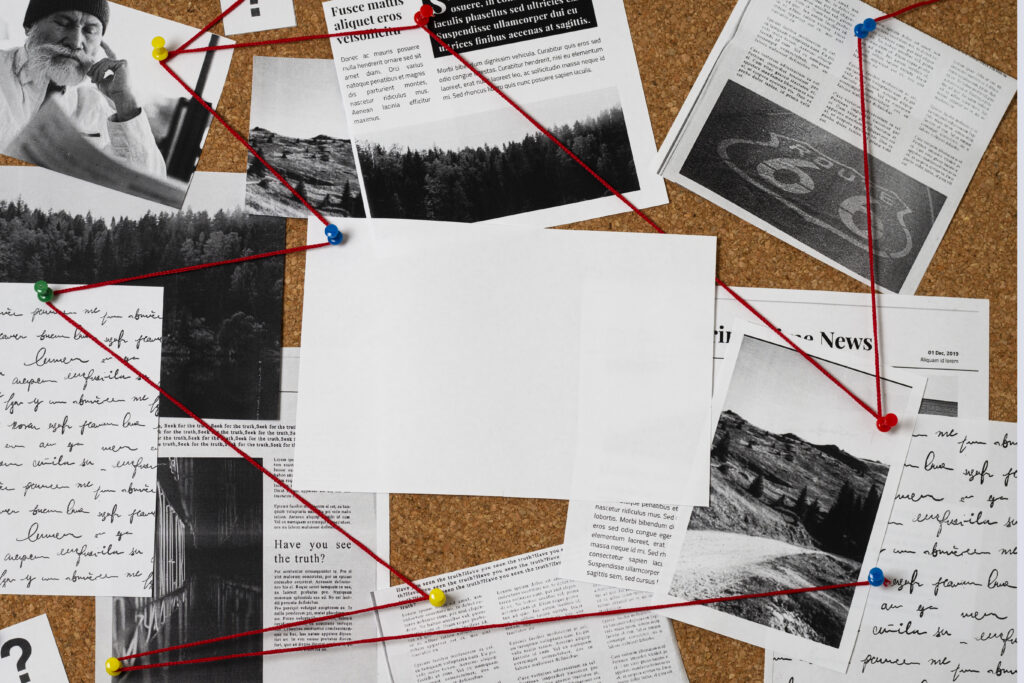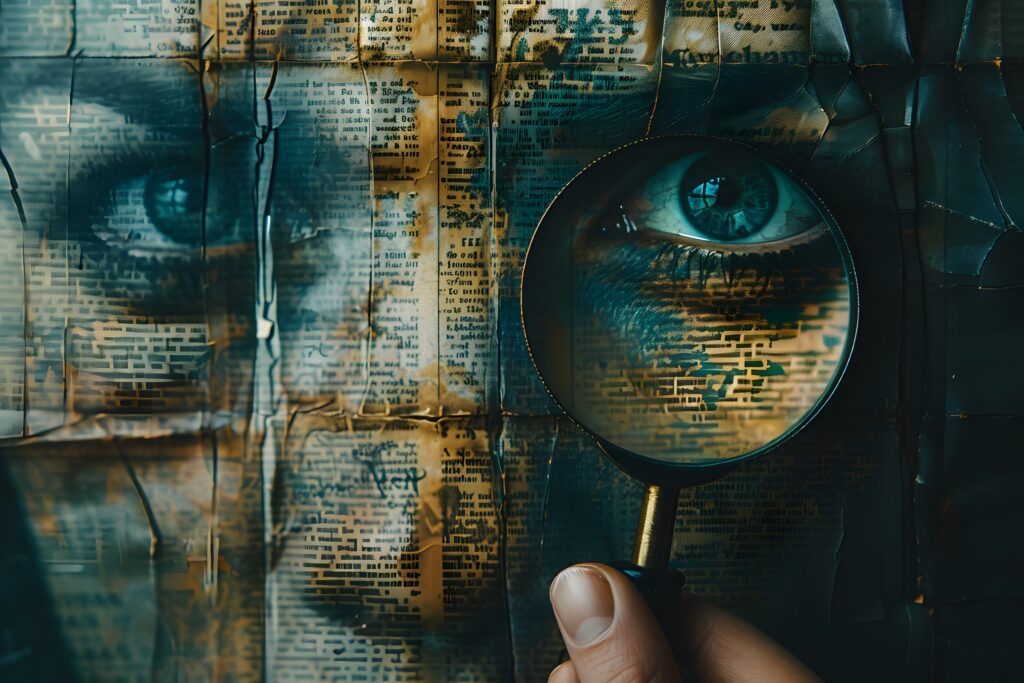
Confirmation Bias: An Idiot’s Guide
We are all subject to confirmation bias, but there are things we can do to reduce its impact and make our decision-making more ‘accurate’. Here we look at what this psychological phenomenon is, how it affects us and the challenges of getting at the truth online.
In the modern world, we are subjected to far more information than ever before. Access to the Internet and social media means that we are regularly bombarded with new ideas and different ways of thinking.
Confirmation bias plays a bigger role than many of us think when we are searching the internet. Particularly on social media, complex algorithms are designed to give us the information that we are looking for – even if it’s wrong.

What is Confirmation Bias?
Confirmation bias is a mental shortcut that makes us favour information that agrees with what we already believe. At the same time, we tend to ignore or dismiss anything that challenges our views. It’s like wearing glasses that only let you see what you want to see, while everything else gets blurred out.
For example, imagine you think left-handed people are more creative. If you meet a left-handed artist, you might think, “See, I was right!” But if you meet a left-handed accountant who hates art, you might shrug it off as an exception. That’s confirmation bias in action. You’re focusing on the evidence that supports your idea and ignoring what doesn’t fit.
This bias happens because our brains like to save energy. It’s easier to stick with what we know than to constantly question our beliefs. But the problem is, it can stop us from seeing the full picture. We end up in echo chambers, surrounded by people and ideas that just reinforce what we already think.
Is Everyone Prone to Bias?
Yes. Confirmation bias isn’t about being stupid or stubborn. It’s something everyone does, even the smartest people. The key is to recognise it and try to challenge yourself. Ask, “Am I only seeing what I want to see?” It’s not easy, but it’s worth it if you want to think more clearly and make better decisions.
The Psychology of Confirmation Bias
Confirmation bias isn’t just a quirk of human thinking – it’s rooted in how our brains evolved. Thousands of years ago, quick decisions could mean the difference between life and death. If you believed a rustling bush meant a predator was nearby, you’d run first and ask questions later. Your brain prioritised survival over accuracy, and confirmation bias helped by reinforcing your assumptions. Even if you were wrong nine times out of ten, that one time you were right saved your life.
This bias is linked to several parts of the brain. The amygdala, which processes emotions like fear, plays a role because it makes us pay attention to information that feels important or threatening. The prefrontal cortex, responsible for reasoning and decision-making, tries to make sense of the world by filtering information. But instead of being neutral, it often favours what aligns with our existing beliefs. This creates a feedback loop where our brain rewards us for being “right,” even when we’re not.
Confirmation bias can also be useful in moderation. It helps us make quick decisions and reduces mental strain. For example, if you’ve always trusted a friend’s advice, you’re likely to keep doing so without overthinking. This saves time and energy. But in today’s complex world, where critical thinking is crucial, it can lead us astray.
Famous experiments have shown how powerful confirmation bias can be. In the 1960s, psychologist Peter Wason conducted the “2-4-6” experiment. Participants were told a sequence of numbers (2, 4, 6) followed a rule, and they had to figure it out by testing their own number sequences. Most people guessed sequences that confirmed their initial assumption (like “even numbers increasing by 2”) but rarely tested sequences that might disprove it. The actual rule was much simpler: any three numbers in ascending order. This showed how people focus on confirming their ideas rather than challenging them.
Another classic example is the Stanford Prison Experiment by Philip Zimbardo. Guards and prisoners quickly fell into roles that confirmed their biases about power and authority, even though they knew it was just an experiment. This demonstrated how deeply ingrained these biases can be.
Confirmation bias isn’t just a flaw – it’s a survival tool that’s outlived its usefulness in some ways. Understanding it helps us see why we think the way we do and how we can do better.
The Different Types of Confirmation Bias
Confirmation bias isn’t just one thing – it shows up in different ways depending on how we interact with information. Here are the main types, along with examples to make them clear:
1. Biased Search for Information
This is when we actively look for evidence that supports what we already believe, while ignoring anything that contradicts it.
Example: Imagine you’re convinced that a certain diet is the best way to lose weight. You might only read success stories or studies that praise the diet, while skipping over research that shows it doesn’t work for everyone. You’re not lying to yourself – you’re just not looking at the whole picture.
2. Biased Interpretation of Information
Even when faced with the same facts, people often interpret them in a way that fits their beliefs.
Example: Two people watch the same political debate. One thinks the candidate did brilliantly, while the other thinks they performed terribly. Both are seeing the same event, but their pre-existing opinions shape how they interpret it.
3. Biased Memory
We’re more likely to remember things that support our beliefs and forget things that don’t.
Example: If you believe your football team is the best, you’ll probably remember all their wins vividly but struggle to recall their losses. Your brain filters out the “inconvenient” memories to keep your belief intact.
4. Selective Exposure
This is when we only surround ourselves with people, media, or information that agrees with us.
Example: If you’re a fan of a particular news channel, you might avoid watching others that have different viewpoints. Over time, you only hear opinions that reinforce your own, creating an echo chamber.
5. Confirmation Bias in Groups (Groupthink)
When people in a group share similar beliefs, they tend to reinforce each other’s biases and dismiss outside perspectives.
Example: In a business meeting, if everyone agrees that a new product will be a hit, they might ignore warning signs or negative feedback from customers. No one wants to be the “outsider” who disagrees, so the bias gets stronger.
6. Polarisation Effect
When people with opposing views are presented with the same evidence, they often end up even more convinced of their original stance.
Example: Two people arguing about climate change might read the same scientific report. The environmentalist sees it as proof that action is needed, while the sceptic focuses on any uncertainties to justify their doubt. Instead of finding common ground, they drift further apart.
7. Belief Perseverance
This is when people cling to their beliefs even after the evidence supporting them has been disproven.
Example: Someone who believes in a conspiracy theory might dismiss hard evidence against it as “fake news” or part of the cover-up. Their belief becomes so strong that no amount of proof can change their mind.
8. Illusory Correlation
This happens when we see a connection between two things that aren’t actually related, just because we expect them to be.
Example: If you believe that full moons make people act strangely, you might notice more odd behaviour during a full moon but ignore all the times people act the same way at other times. Your brain creates a pattern that doesn’t really exist.
Why Does This Matter?
These types of confirmation bias show how easily our thinking can be skewed. Whether it’s searching for information, interpreting facts, or remembering events, our brains are wired to protect our beliefs. Recognising these patterns is the first step to thinking more clearly and making better decisions.

The Role of the Internet and Social Media in Promoting Confirmation Bias
The internet and social media have revolutionised how we access information, but they’ve also turbocharged confirmation bias. Here’s how:
1. Algorithms: The Echo Chamber Effect
Social media platforms like Facebook, Twitter (now X), and Instagram use algorithms to keep you engaged. These algorithms are designed to show you content you’re likely to click on, like, or share. The problem? They prioritise content that aligns with your existing beliefs and interests.
- How it works: If you frequently engage with posts about climate change activism, the algorithm will show you more of the same. It won’t show you posts from climate change sceptics, even if they present valid arguments. Over time, your feed becomes an echo chamber, reinforcing your views and shielding you from opposing perspectives.
- Example: During elections, people on opposite sides of the political spectrum often see completely different news stories. One person’s feed might be full of positive stories about their preferred candidate, while another’s is filled with criticism. Both think they’re getting the full picture, but they’re only seeing half of it.
2. Filter Bubbles
A filter bubble is the personalised “bubble” of information created by algorithms. It’s like living in a world where everyone agrees with you, and anything that challenges your views is filtered out.
- Why it’s a problem: Filter bubbles make it hard to see alternative viewpoints or question your beliefs. They create the illusion that everyone thinks like you, which can lead to extreme opinions and polarisation.
- Example: If you’re anti-vaccine, your social media feed might be filled with stories about vaccine side effects and conspiracy theories. You’re unlikely to see scientific studies or expert opinions that support vaccination. This makes it harder to make informed decisions.
3. The Spread of Misinformation
Social media makes it easy for false or misleading information to spread quickly. Confirmation bias plays a big role here because people are more likely to believe and share information that fits their existing beliefs.
- How it works: A sensational headline that aligns with your views is more likely to grab your attention, even if it’s not true. Once you share it, your network sees it, and the cycle continues. Algorithms amplify this by prioritising content that gets a lot of engagement, regardless of its accuracy.
- Example: During the COVID-19 pandemic, misinformation about fake cures or vaccine dangers spread rapidly. People who were already sceptical of vaccines were more likely to believe and share these posts, creating a dangerous feedback loop.
4. Tribalism and Polarisation
Social media encourages tribalism – the “us vs. them” mentality. When people feel part of a group, they’re more likely to dismiss opposing views and double down on their own beliefs.
- How it works: Online communities often form around shared beliefs, whether it’s politics, health, or lifestyle choices. These groups can become echo chambers where dissenting opinions are ridiculed or banned. This strengthens group identity but also deepens divides.
- Example: Political debates on Twitter often devolve into shouting matches where people only engage with those who agree with them. This reinforces their beliefs and makes compromise or understanding seem impossible.
5. The Illusion of Expertise and Confirmation Bias
The internet gives everyone a platform, which can make it hard to distinguish between credible sources and misinformation. Confirmation bias makes this worse because we’re more likely to trust sources that align with our views, even if they’re not reliable.
- How it works: If a blog or YouTube channel confirms what you already believe, you might see it as trustworthy, even if it lacks evidence or expertise. At the same time, you might dismiss expert opinions that challenge your views as “biased” or “part of the system.”
- Example: Flat Earthers often cite YouTube videos as “proof” of their beliefs, while dismissing NASA scientists as part of a global conspiracy. Their bias leads them to trust amateur content over scientific evidence.
Why This is a Big Problem
The combination of algorithms, filter bubbles, and misinformation creates a perfect storm for confirmation bias. It’s not just about being wrong – it’s about being so convinced you’re right that you stop questioning yourself. This can have serious consequences, from political polarisation to public health crises.

Conspiracy Theories and Confirmation Bias
Conspiracy theories have been around for centuries, but in the age of the internet, they’ve found a new and powerful platform. From flat Earth beliefs to claims about secret government plots, these theories attract millions of followers. At the heart of this phenomenon is confirmation bias, which plays a key role in why people are drawn to and convinced by these ideas.
One reason conspiracy theories are so appealing is that they offer simple explanations for complex events. Life can feel chaotic and unpredictable, and conspiracy theories provide a sense of order and control. They suggest that someone, somewhere, is pulling the strings, and if you can just figure out who, you’ll understand how the world really works.
This is comforting, especially in times of uncertainty or crisis. For example, during the COVID-19 pandemic, theories about the virus being a hoax or a bioweapon created in a lab gained traction because they offered clear, if false, answers to a confusing and frightening situation.
Confirmation bias comes into play because once someone starts believing in a conspiracy theory, they tend to seek out and interpret information in a way that supports their belief. If you think the moon landing was faked, you’re more likely to watch videos and read articles that question the official story. At the same time, you’ll dismiss or ignore evidence that contradicts your view, such as expert testimony or scientific analysis. This creates a self-reinforcing cycle where the more you engage with the theory, the more convinced you become.
Social media amplifies this effect by connecting like-minded individuals and creating echo chambers. If you believe in a conspiracy theory, you can easily find online communities that share your views. These groups provide validation and a sense of belonging, which makes it even harder to question your beliefs. For instance, platforms like YouTube and Facebook often recommend content that aligns with what you’ve already watched or liked, pushing you deeper into the conspiracy rabbit hole.
Another factor is the human tendency to distrust authority. Many conspiracy theories thrive on the idea that governments, corporations, or other powerful entities are hiding the truth. This distrust can be rooted in real experiences of corruption or incompetence, but confirmation bias takes it to the extreme. If you already believe that those in power are dishonest, you’re more likely to accept claims that they’re covering up a conspiracy, even if the evidence is flimsy. For example, the 9/11 Truth Movement argues that the U.S. government was involved in the attacks, playing on existing suspicions about government secrecy and manipulation.
It’s important to note that people who believe in conspiracy theories aren’t necessarily irrational or unintelligent. Often, they’re trying to make sense of the world in the best way they know how. Confirmation bias is a natural part of human thinking, and everyone is susceptible to it. The difference is that, in the case of conspiracy theories, this bias can lead people down a path where evidence and reason take a back seat to belief and emotion.
Understanding the role of confirmation bias in conspiracy theories helps us approach the topic with empathy rather than judgment. Instead of dismissing believers as “crazy” or “gullible,” we can recognise that they’re caught in a cognitive trap that anyone could fall into. By fostering critical thinking and encouraging open-mindedness, we can help people question their assumptions and see the world in a more balanced way.
How to Reduce Confirmation Bias
Confirmation bias is a natural part of how our brains work, but that doesn’t mean we’re powerless against it. With effort and practice, we can train ourselves to think more critically and make better decisions. Here are some practical strategies to reduce confirmation bias in everyday life, both online and offline.
1. Actively Seek Out Opposing Views
One of the most effective ways to combat confirmation bias is to expose yourself to ideas and perspectives that challenge your beliefs. This doesn’t mean you have to agree with them, but listening to different viewpoints helps you see the bigger picture.
- Example: If you’re passionate about a political issue, make a point of reading articles or watching videos from the other side. For instance, if you support stricter gun control, spend some time understanding the arguments of those who oppose it. You might not change your mind, but you’ll gain a deeper understanding of the issue.
- Tip: Follow people on social media who have different opinions. If your feed is full of like-minded voices, deliberately add a few who disagree with you. This can help break the echo chamber effect.
2. Practice Critical Thinking to Reduce Confirmation Bias
Critical thinking is the ability to analyse information objectively and make reasoned judgments. It’s a skill that takes time to develop, but it’s one of the best tools for reducing confirmation bias.
- Ask Questions: When you encounter new information, ask yourself: Who is the source? What evidence supports this claim? Are there alternative explanations? For example, if you read a headline claiming that a new study proves chocolate is good for weight loss, dig deeper. Who funded the study? Was it peer-reviewed? What do other experts say?
- Evaluate Evidence: Don’t just accept information because it feels true or aligns with your beliefs. Look for credible, well-researched evidence. For instance, if someone claims that a certain diet can cure a disease, check if there are clinical trials or scientific studies to back it up.
- Avoid Jumping to Conclusions: Give yourself time to process information before forming an opinion. If you hear a shocking news story, wait for more details to emerge before deciding what to think.
3. Be Aware of Emotional Triggers
Confirmation bias is often driven by emotions. We’re more likely to believe information that makes us feel good or confirms our identity, and we’re quick to dismiss anything that makes us uncomfortable.
- Example: If you’re a fan of a particular sports team, you might feel a rush of pride when they win and dismiss their losses as bad luck. Recognising this emotional bias can help you see the team’s performance more objectively.
- Tip: When you feel strongly about something, pause and ask yourself: Am I reacting emotionally? Is this belief based on facts or feelings? Taking a step back can help you think more clearly.
4. Diversify Your Information Sources
Relying on a single source of information increases the risk of confirmation bias. Make an effort to get your news and knowledge from a variety of sources, especially those with different perspectives.
- Example: If you usually watch one news channel, try switching to another with a different political slant. Compare how they cover the same story. You’ll likely notice differences in tone, emphasis, and even facts.
- Tip: Use fact-checking websites like Snopes, FactCheck.org, or Full Fact to verify claims. These sites can help you separate fact from fiction and avoid falling for misinformation.
5. Engage in Thoughtful Discussions
Talking to others, especially those who disagree with you, can help you see things from a different angle. The key is to approach these conversations with an open mind and a willingness to listen.
- Example: If you’re discussing climate change with someone who denies it, instead of arguing, ask questions. Why do they feel that way? What evidence do they have? This can lead to a more productive dialogue and might even reveal gaps in your own understanding.
- Tip: Practice active listening. Focus on understanding the other person’s point of view rather than planning your next argument. This can help reduce defensiveness and create a more constructive conversation.
6. Reflect on Your Beliefs
Take time to examine your own beliefs and ask yourself why you hold them. Are they based on solid evidence, or are they influenced by upbringing, culture, or social pressure?
- Example: If you’ve always believed that certain careers are more suitable for men or women, ask yourself why. Is this belief based on facts, or is it a stereotype you’ve absorbed over time? Reflecting on these questions can help you challenge unconscious biases.
- Tip: Keep a journal where you write down your thoughts and beliefs. Over time, review your entries and look for patterns. Are there beliefs you’ve changed? Why? This can help you become more self-aware.
7. Use Structured Decision-Making
When making important decisions, use a structured approach to reduce the influence of bias. This involves gathering information, weighing pros and cons, and considering alternatives.
- Example: If you’re deciding whether to invest in a new business venture, create a list of criteria to evaluate the opportunity. Research the market, consult experts, and consider potential risks. This systematic approach can help you make a more informed decision.
- Tip: Try techniques like the “Six Thinking Hats” method, which encourages you to look at a problem from multiple perspectives (e.g., emotional, logical, creative). This can help you see beyond your biases.
8. Learn About Cognitive Biases
Understanding how biases work can help you spot them in yourself and others. Confirmation bias is just one of many cognitive biases that affect our thinking. Others include the Dunning-Kruger effect (overestimating your knowledge) and the availability heuristic (relying on immediate examples).
- Example: If you’re aware of the availability heuristic, you’ll know that hearing about a plane crash might make you overestimate the risks of flying, even though it’s statistically one of the safest ways to travel.
- Tip: Read books or take courses on critical thinking and cognitive biases. Daniel Kahneman’s Thinking, Fast and Slow is a great place to start.
9. Embrace Uncertainty
Confirmation bias often stems from a desire for certainty. But the truth is, many issues are complex and don’t have clear-cut answers. Learning to be comfortable with uncertainty can help you avoid jumping to conclusions.
- Example: If you’re unsure about a medical diagnosis, don’t rush to accept the first explanation you find online. Instead, consult multiple sources and talk to a healthcare professional. Accept that it might take time to get a clear answer.
- Tip: Practice saying, “I don’t know.” It’s okay to admit when you’re unsure or when more information is needed.
10. Encourage a Culture of Open-Mindedness
If you’re in a position of influence, whether at work, in your community, or at home, you can help others reduce their confirmation bias by fostering an environment where questioning and critical thinking are encouraged.
- Example: In a team meeting, encourage everyone to share their opinions, even if they’re unpopular. Ask questions like, “What are we missing?” or “How could we be wrong?” This can help the group avoid groupthink and make better decisions.
- Tip: Reward curiosity and intellectual humility. Praise people for changing their minds when presented with new evidence, rather than seeing it as a sign of weakness.
Reducing confirmation bias isn’t about being perfect – it’s about being aware. By actively seeking out diverse perspectives, practising critical thinking, and reflecting on your beliefs, you can make better decisions and see the world more clearly. It’s not always easy, but it’s worth the effort. After all, the goal isn’t to be right all the time; it’s to be open to learning and growing.
Conclusion
Confirmation bias is something we all struggle with, but it doesn’t have to control how we think. By understanding how it works and taking steps to challenge our assumptions, we can make better decisions, avoid misinformation, and see the world more clearly. It’s not about being perfect – it’s about being aware and willing to grow. Whether you’re scrolling through social media, having a debate, or making a big life choice, remember to question your biases and stay open to new perspectives. The more we practice this, the better we’ll get at thinking critically and navigating an increasingly complex world.
Frequently Asked Questions About Confirmation Bias
1. What is confirmation bias?
Confirmation bias is the tendency to favour information that supports your existing beliefs while ignoring or dismissing evidence that contradicts them.
2. Is confirmation bias the same as being stubborn?
Not exactly. Confirmation bias is a subconscious process that affects everyone, not just stubborn people. It’s about how our brains naturally filter information, not just a refusal to change our minds.
3. Can confirmation bias be completely eliminated?
Probably not, because it’s a natural part of how our brains work. However, we can reduce its impact by being aware of it and practising critical thinking.
4. How does social media contribute to confirmation bias?
Social media algorithms show you content that aligns with your interests and beliefs, creating echo chambers. This reinforces your views and makes it harder to see opposing perspectives.
5. Why do people believe in conspiracy theories?
Conspiracy theories offer simple explanations for complex events and often play on distrust of authority. Confirmation bias makes people more likely to accept information that supports the theory and ignore evidence against it.
6. How can I spot confirmation bias in myself?
Pay attention to how you react to new information. Do you quickly accept things that align with your beliefs but dismiss things that don’t? If so, you might be experiencing confirmation bias.
7. Can confirmation bias affect relationships?
Yes. For example, if you believe a friend is always late, you might notice every time they’re late but ignore the times they’re on time. This can create unnecessary tension.
8. How does confirmation bias affect decision-making?
It can lead to poor decisions because you’re only considering information that supports your preferred outcome. For example, an investor might only focus on positive news about a stock they like, ignoring warning signs.
9. What’s the difference between confirmation bias and cognitive dissonance?
Confirmation bias is about seeking information that supports your beliefs. Cognitive dissonance is the discomfort you feel when you encounter information that contradicts your beliefs. They often work together – confirmation bias helps you avoid cognitive dissonance.
10. How can I help someone else overcome confirmation bias?
Encourage them to consider alternative viewpoints and ask questions rather than arguing. For example, instead of saying, “You’re wrong,” ask, “What evidence would change your mind?” This can help them think more critically without feeling attacked.
